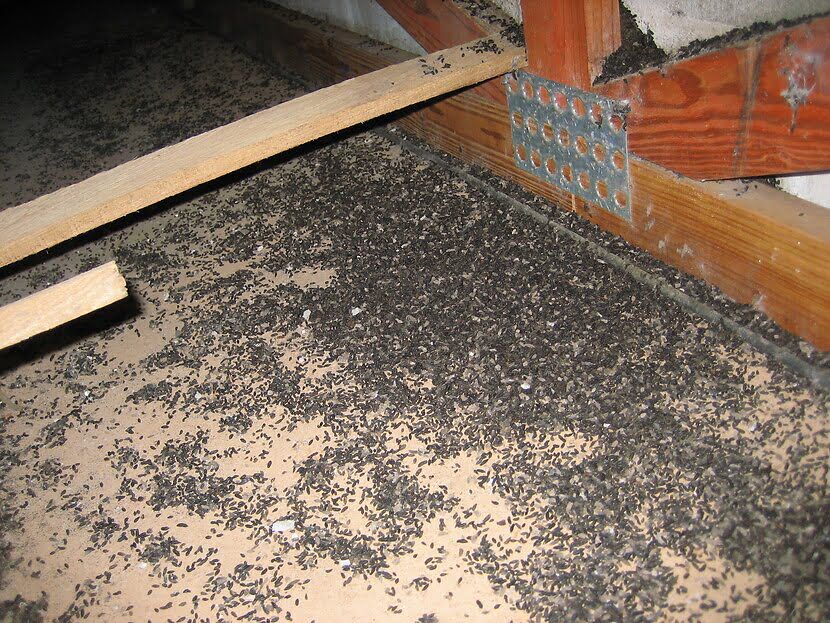
One of the most unpleasant sides of dealing with a bat infestation within a building actually comes once the bats themselves have actually have been removed, and this is dealing with all of the bat droppings, or guano as it is known. This may seem like quite a simple job, but because of the nature and fungal content of the guano it is often messy and laborious work.
Precautions Before Starting The Work
Probably the biggest consideration for those who have to clean up bat droppings is that most guano will have the fungus that causes histoplasmosis in it, and this releases spores which can trigger the condition when inhaled. For this reason it is vital that anyone carrying out any work in an area where bat droppings have been found or are actually cleaning up the droppings wear a mask to ensure no spores are inhaled.
In cases where the guano is particularly thick it may even be worth wearing a protective suit, and many of the most experienced bat removal experts will have used these cleaning up after the largest colonies. The regulations for protective equipment will vary from state to state, so this will need to be checked before work can begin.
Vacuum Or Shovel?
Depending on the volume of droppings that are being cleaned, it can sometimes be possible to use a vacuum to suck up much of the guano. This will generally work for smaller quantities of guano, but when there is a thick layer this won't always be possible. In these cases there is no option but to do most of the work manually, moving the droppings into a bucket or another container and then removing it.
Once the guano has been collected then this will need to be kept in a sealed container when it is removed from the area, because the fungus that is present in the droppings will have been disturbed, and the spores do pose a health risk.
Disposing Of The Bat Droppings
Once all of the droppings have been collected into sealed containers, the guano will either need to be decontaminated or disposed of in a location where it will not pose a health risk. At this point it is always wise to refer to your local authority to see if there are specific regulations about what can be done with the droppings. Some states will actually provide guidance or facilities to help people to dispose of these droppings.
Decontaminating The Property
Once all of the guano has been removed from the property, the area will have to be decontaminated before it is safe for any masks and breathing apparatus to be removed. The entire area will need to be sprayed with an anti-fungal and anti-bacterial treatment to ensure that any remaining spores or viruses that have escaped capture during the guano clean up will no longer be a threat to the people who have to live and work in the area. During this period it should only be the person doing the spraying who should be in the room or roof cavity, as this treatment is not safe to be used in the presence of people.
Hire An Expert
The vast majority of people may have the aptitude when it comes to dealing with a pest such as a mouse in the house or an armadillo in the garden, but dealing with a bat infestation really should be left to the experts. The skills and expertise required when dealing with a bat colony in a property is significant, and the professionals will have all of the equipment required in order to deal with the problem quickly and efficiently.
As well as being able to help exclude the bats from the property and help to clean up and repair the damage caused by these small animals, a bat removal expert will also be able to ensure this is done within the existing laws and regulations in your state. No bat removal work can be carried out between April and August because this is the maternity season for bats and disturbing them is illegal, so the professionals will only be able to provide the service outside of these months.
Go back to the pestcontrolbat.com home page.
Copyright 2021 - pestcontrolbat.com
Nationwide Bat Control